- The female reproductive system
- Tool: Menstruation calculator
- About pregnancy
- Birth and postnatal information
- My experience
The female reproductive system
Anatomy of the female reproductive system
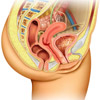 |
The female urogenital tract consists of all the organs involved in reproduction and the formation and release of urine. It includes the kidneys, ureters, bladder, urethra, and the organs of reproduction: uterus, ovaries, fallopian tubes and vagina. The uterus is the major female reproductive organ. |
For more information on the anatomy of the reproductive system, see Female Urogenital System and Male Urogenital System.
Menstruation
 |
Menstruation involves ovulation and shedding of the endometrium in a cyclical fashion in an attempt to release an unfertilised egg ready for fertilisation when in the presence of sperm. The cycle has an average duration of 28 days, but the normal range is between 21 to 35 days. |
For more information, see Menstruation.
[calc_menstruation]
About pregnancy
Pregnancy planning (preconception advice)
 |
Knowing the basic physiology of pregnancy can increase a woman’ chances of becoming pregnant. For those who are trying to conceive, the best time to have sexual intercourse is around the time of ovulation. This is usually on day 14 of the menstrual cycle, but it varies amongst women. |
For more information on how to prepare for pregnancy, see Pregnancy Planning (Preconception Advice).
Pregnancy investigations
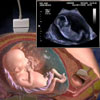 |
Pregnancy investigations are procedures used to diagnose complications or foetal abnormalities. Amniocentesis involves inserting a needle into the uterus to withdraw a sample of amniotic fluid. Other diagnostic procedures may be offered, including an obstetric ultrasound, and chorionic villus sampling. |
For more information, see Pregnancy Investigations.
Stages of pregnancy
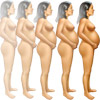 |
The first trimester of pregnancy is when the major organ systems of the foetus begin the develop. By the eighth week after fertilisation, all organs are present. The second trimester is a period of rapid relative growth. The third trimester is when the foetus builds muscle and fat to increase body weight. |
For more information on foetal development and maternal changes during pregnancy, see Stages of Pregnancy.
Symptoms in pregnancy
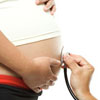 |
Pregnancy induced nausea and vomiting or ‘morning sickness’ is a very common symptom of pregnancy. Other symptoms such as abdominal pain and vaginal bleeding may be indicative of miscarriage, ectopic pregnancy, molar pregnancy, placenta praevia or abruptio placenta. |
For more information, see Symptoms in Pregnancy.
Complications of pregnancy
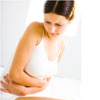 |
Pregnancy is a normal and natural event. However, it may pose risks to the mother. If implantation occurs anywhere outside the uterus, then the result is an ectopic pregnancy. Other complications of pregnancy are placenta praevia, placental abruption, preeclampsia, which increases the risk of cardiovascular problems, or premature delivery. |
For more information, see Complications of Pregnancy.
Termination of pregnancy
 |
If a woman chooses not to pursue a pregnancy, she may terminate it by having an abortion. An abortion is a surgical procedure to remove the contents of the uterus. Late term abortions are usually not possible unless there is a risk to the woman’s health, or the foetus has a serious medical condition. |
For more information, see Abortion.
Lifestyle during pregnancy
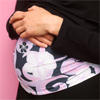 |
Nutritional requirements change during pregnancy. Pregnant women should avoid foods that are more likely to contain harmful pathogens (e.g. processed meats). Alcohol, caffeine, tobacco smoke and certain drugs may affect foetal development and should also be avoided. Pregnancy is also a critical time to focus on good dental hygiene and safe exercise. |
For more information, see Lifestyle During Pregnancy.
Birth and postnatal information
Birth
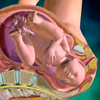 |
Pregnancy comes to an end with birth, the expulsion of the foetus through the woman’s vagina. Women who are soon to give birth will experience contractions, which gradually become more frequent and regular. When the cervix has fully dilated, the woman may feel an urge to push. |
For more information, seeBirth.
Life after childbirth
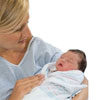 |
The postnatal period is a time of major change for a family. Women’s hormones and weight are rapidly readjusting, lifestyles and relationships are changing, and the baby needs constant attention. Breastfeeding provides nourishment to an infant and is recommended for at least 6 months exclusively. |
For more information, see Life After Childbirth.
My experience
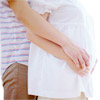 |
To all you first-timers out there: If you have just fallen pregnant or are planning to have your first child and you want to learn a bit about the business of making bubs, Tania shares her first pregnancy with you. Get it straight from the Mamma’s mouth – all the wonder and all the weirdness. |
To read Tania’s story, see How Tania learnt the baby-making business.
All content and media on the HealthEngine Blog is created and published online for informational purposes only. It is not intended to be a substitute for professional medical advice and should not be relied on as health or personal advice. Always seek the guidance of your doctor or other qualified health professional with any questions you may have regarding your health or a medical condition. Never disregard the advice of a medical professional, or delay in seeking it because of something you have read on this Website. If you think you may have a medical emergency, call your doctor, go to the nearest hospital emergency department, or call the emergency services immediately.







